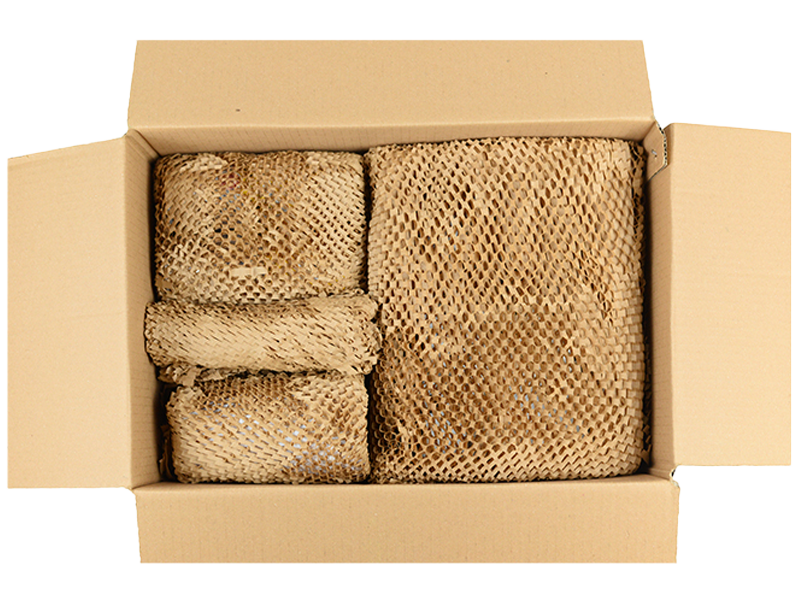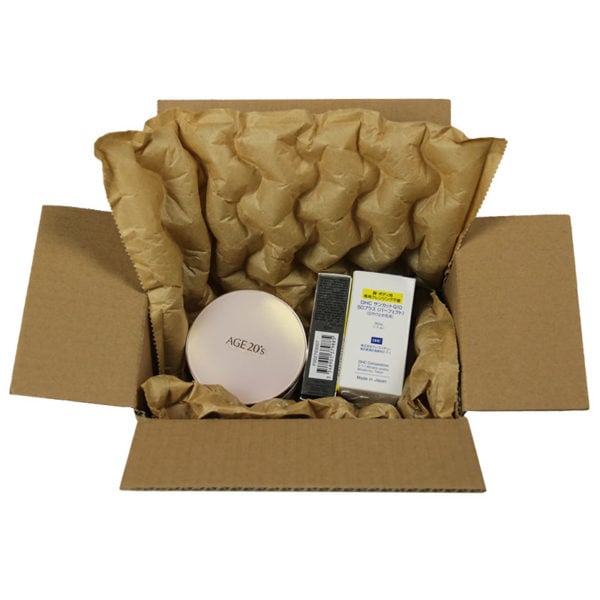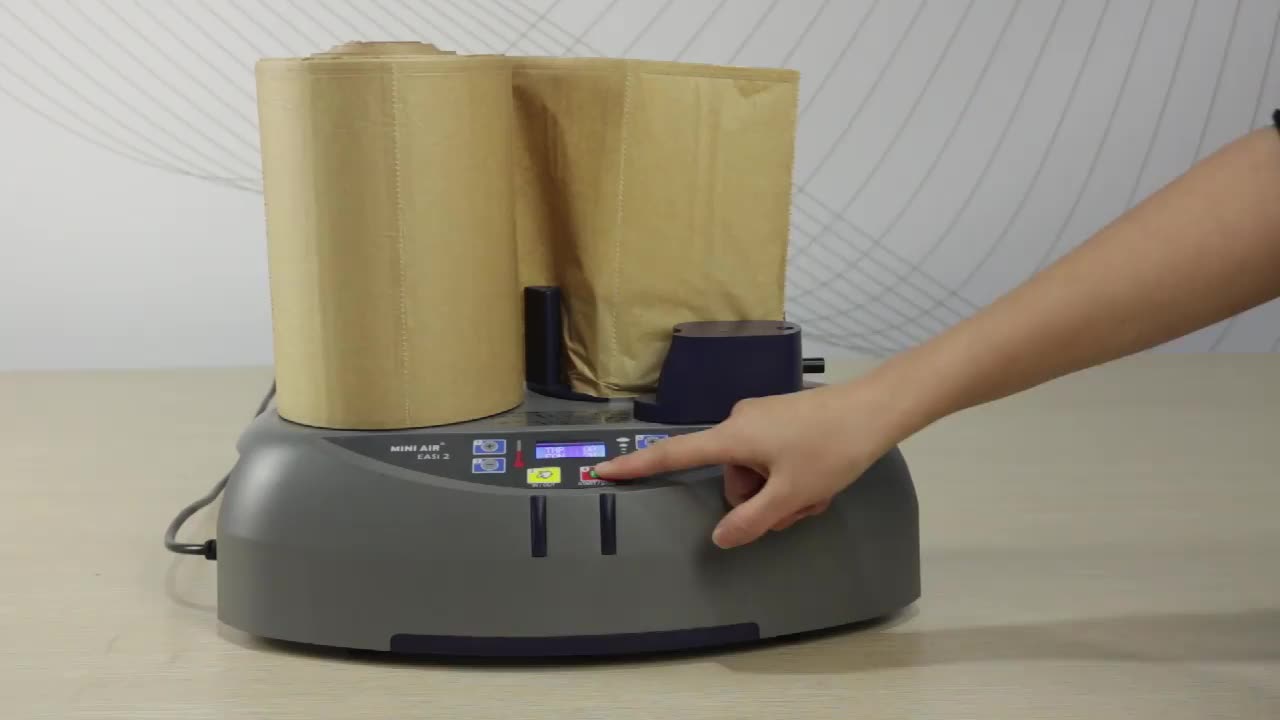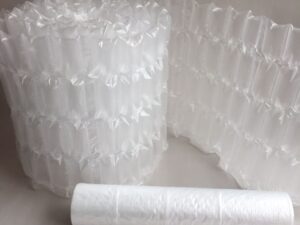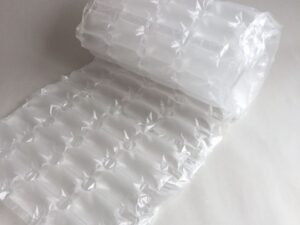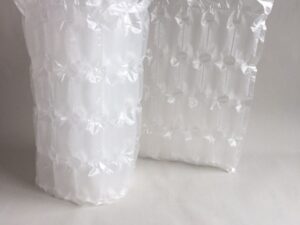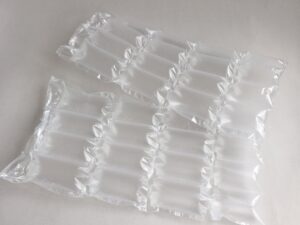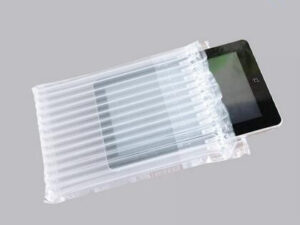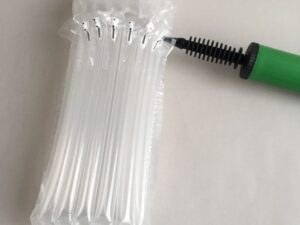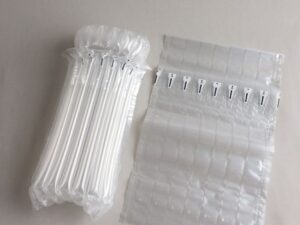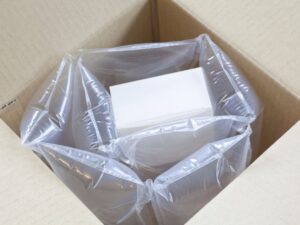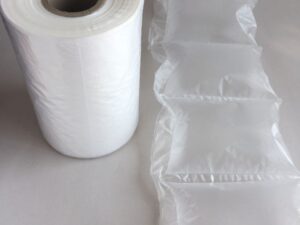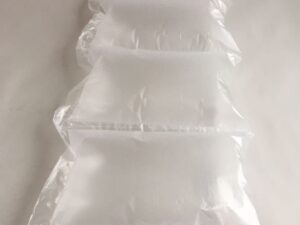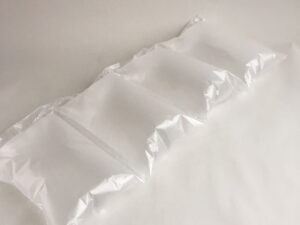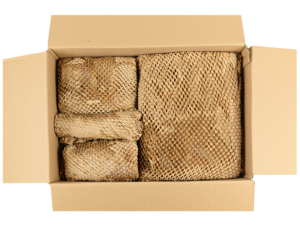Air Paper Cushion
100% biodegradable and recyclable Made from paper
Paper air pillows, also known as air cushion packaging, are a popular solution for packaging products safely and securely during transportation. They are made from lightweight and recyclable materials, making them a sustainable and eco-friendly choice for businesses. The air pillows are created by filling up sheets of paper with air using a special packaging machine.
Description
100% biodegradable and recyclable Made from paper
Paper air pillows, also known as air cushion packaging, are a popular solution for packaging products safely and securely during transportation. They are made from lightweight and recyclable materials, making them a sustainable and eco-friendly choice for businesses. The air pillows are created by filling up sheets of paper with air using a special packaging machine. The inflated paper sheets are then used to cushion and protect the products inside the shipping box or container. The air-filled pillows act as shock absorbers, preventing damage to the items within during transit. One of the main advantages of using paper air pillows for packaging is their versatility.
They can be used to protect a variety of products, including fragile and delicate items such as glassware, electronics and ceramics. They also come in different sizes and shapes, so they can be customized to fit the specific needs of the product being shipped. Paper air pillows are also cost-effective, as they are relatively inexpensive to produce and transport. They take up minimal storage space and can be shipped to businesses in large quantities. Once used, they can be quickly and easily disposed of, as they are recyclable and biodegradable. In conclusion, paper air pillows are a practical and eco-friendly packaging solution that provides reliable protection for products during transportation. They are versatile, cost-effective and easy to dispose of responsibly, making them a great choice for any business looking to minimize their environmental impact while ensuring the safe delivery of their products.
FEATURES
Paper air pillows are a popular packaging solution due to their many features and benefits.
Here are some key features of paper air pillows for packaging:
- Cushioning: Paper air pillows provide excellent cushioning for fragile items during shipping and handling. They help protect delicate products from impacts, vibrations, and other types of damage.
- Lightweight: Paper air pillows are lightweight, which saves on shipping costs while still providing adequate protection.
- Eco-friendly: Paper air pillows are made from recyclable materials, so they are environmentally friendly. They can be reused, recycled or disposed of without harming the environment.
- Easy to use: Paper air pillows require minimal setup and are easy to handle. They can be inflated quickly and easily, and can be used with any packaging material such as boxes or envelopes.
- Cost-effective: Paper air pillows are a cost-effective packaging solution. They are less expensive than other conventional packaging solutions like solid foam, and also require less storage space.
- Versatile: Paper air pillows can be used for a variety of products and applications. They come in different sizes, shapes and types, that can be customized based on the requirements and needs of the product. Overall, paper air pillows are a great option for those who want an eco-friendly, cost-effective, and lightweight packaging solution that provides excellent cushioning for their products.
LABELS
Barcode labels are a type of label that contains information typically in the form of a series of lines or dots of varying width and spacing. Barcode labels are commonly used in inventory and retail management to quickly and efficiently identify products and store them in a database. A plain barcode label is simply a label with a barcode printed on it, usually without any additional text or graphics. Plain barcode labels can be applied to products or packaging, allowing for fast and accurate tracking and inventory control. Barcode labels can be printed on a variety of materials including paper, polyester, and vinyl, and can be customized in terms of size, color, and barcode symbology to meet specific business needs. Overall, the use of barcode labels provides a more streamlined and accurate inventory and tracking system, which can lead to increased efficiency and cost savings for businesses.
FEATURES
Barcode labels are widely used in various industries such as retail, logistics, manufacturing, healthcare, and many more. These labels are essential for inventory management, tracking, and identification of products or assets. The application of barcode labels offers many benefits such as faster and more accurate data collection, increased efficiency, and improved customer service.
- Retail industry: Barcode labels are extensively used in the retail industry for tracking inventory and sales. The labels provide an efficient way of tracking product movement, such as tracking the products from the warehouse to the store. Additionally, barcode labels can be used for price labeling, shelf labeling, and even for customer loyalty programs.
- Logistics industry: Barcode labels are essential in the logistics industry for tracking products and packages during transportation. The labels provide real-time tracking and monitoring of products and assist in ensuring that the correct products are delivered to the correct destination. Barcode labels are also used in warehouses for inventory management, tracking material movement, and reducing errors.
- Manufacturing industry: Manufacturing industries extensively use barcode labels for tracking inventory, work in progress, and finished products. Barcode labels assist in ensuring that the correct products are manufactured, reducing errors, and increasing efficiency. They also assist in tracking the movement of products across different production stages.
- Healthcare industry: In the healthcare industry, barcode labels are used for tracking patient information, medication, and medical equipment. Barcode labels contain important information such as patient name, date of birth, and medication dosage, which can help to prevent errors and improve patient safety. Overall, the application of barcode labels offers many benefits to various industries. Barcode labels provide an easy and efficient way of tracking, identifying, and managing products or assets, which ultimately leads to increased efficiency and reduced errors.

